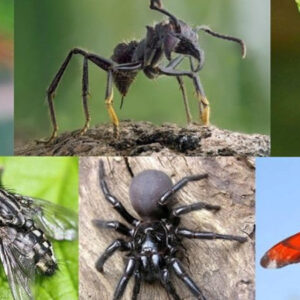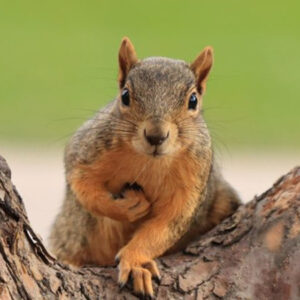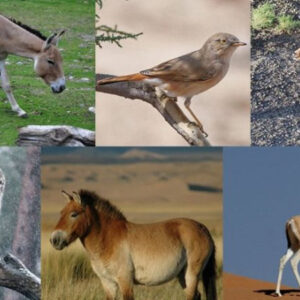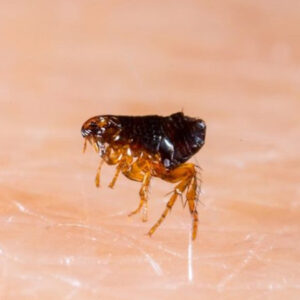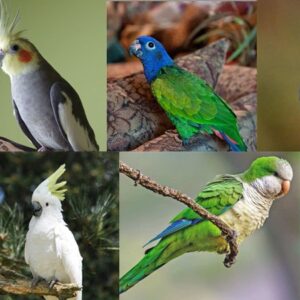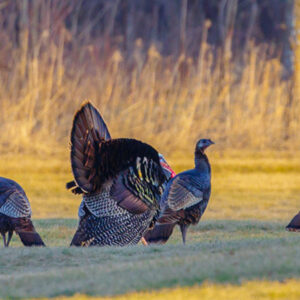
Have you ever looked up at the sky, seen a flock of birds flying by, and wondered “How many birds are there in the world?”. Well, there’s a lot, and many more are yet to be discovered. So, it comes as no surprise to learn that the global bird population easily outnumbers the human population. Read on and learn more about the many different bird species and their population.
How Many Birds Are There in the World?
Counting the actual number of birds in the world is an impossible feat. And it would take an entire country or more to work together just to have an estimate of the number of birds on Earth.
And this monumental task was undertaken not by any particular country but through a combined effort of 600,000 amateur birdwatchers! These passionate individuals came together to collaborate and create an online database called eBird, a website that the Cornell Lab of Ornithology handles.
They also collated data from other bird-focused organizations like The British Trust for Ornithology, Partners in Flight, and BirdLife Organization. Once all the data was collected, they further analyzed it and came to a final number of the world’s population — or the closest they could get to.
As of 2021, the world bird population is between 50 billion and 428 billion.
You may think that this population range is too vast, and it is. But there are several factors that make it nearly impossible to narrow down the number of speculated birds or even round it off to the nearest number.
Some factors are uncontrollable and impact precise data, like the migration information of every bird species and unidentified bird species. Besides, the scope of the area, which is the entire world, is too extensive.
However, it goes without saying that the bird population is more than the human population, with up to six birds for one human.
10 Bird Species by Global Population
Identifying the number of bird species is different from assessing their population, so you can get a closer estimated range of 9,000 to 11,000 — that we know of. There are still unrecorded bird types, especially those living in remote areas where no humans can observe and record them.
Of the many bird species we do have a record of, take a look at the top 10 based on their population in the world:
1. Domestic Chicken (30 billion)

Image source: Pinterest
On top of the list is your domestic chicken, with a population size of a whopping 30 billion worldwide. It is also the most domesticated fowl and can be kept as a pet or as part of livestock. Chickens are primarily raised for their eggs and meat, with more than 50 million chickens being processed yearly.
Today, there are over a hundred classifications and chicken breeds, each having unique characteristics, like their place of origin, plumage and skin color, number of toes, and even the abundance of feathers. But a common feature that all domestic chickens share is having a rounded, almost stocky appearance.
Chickens are fruitful egg layers because they can produce eggs throughout the year, especially during the warmer months. Additionally, flying is not the chicken’s strongest suit despite having wings. It can fly only short distances, which can’t even be considered the standard “bird flying” because they only do this when they feel threatened and are trying to escape.
2. Red-billed Quelea (1.5 billion)

Image source: Pinterest
There are 1.5 billion red-billed queleas today. These tiny birds, about 12 centimeters long, are also called red-billed dioch or red-billed weaver, and as the name suggests, they feature a bright red (sometimes orange) cone-shaped bill.
Queleas love to eat and are omnivores, primarily enjoying eating grass seeds, wheat, corn, and rice. In fact, queleas can eat from dusk until dawn, eating more than half their body weight.
And when they eat, they eat in large flocks, which has earned them a nickname in Africa as the “feathered locusts” because they bring so much destruction to the crops. Aside from eating in flocks, these birds also nest and travel in colonies, given that they are incredibly social birds.
The male red-billed quelea has a more vibrant appearance than its female counterpart. The males feature either white or black masks, or the surrounding feathers of their masks come in vibrant pink, red, lavender, or yellow. Females don’t have these facial masks and have plain-colored heads but with a red bill.
3. Mourning Dove (475 million)

Image source: Pinterest
Often confused with turtle doves, mourning doves are a common sight in North America, often seen in parks and public squares. They have a population of nearly 475 million.
These birds get their name from the sound they make, which is a sad and mournful call. In reality, however, the male birds make this sound to find a mate.
What’s unique about these gray and brown doves is that they take mating very seriously. Mourning doves mate for life. That’s why they are often substitutes for white doves for weddings, as they also represent faith, love, and commitment.
4. American Robin (310 million)

Image source: Pinterest
One of the most common and easily recognized birds in the US, thanks to its dark hood and red breast, is the American robin, with a population of 310 million. These birds have one of the most dexterous and sturdy aerial acrobatics skills among the thrushes in North America.
They also have very keen eyesight and often use their monocular vision independently to forage for worms on the ground or catch insects in mid-flight. An interesting fact about American robins is that they lay light blue-colored eggs, and in almost every instance, the females would always have four eggs with one egg per day.
5. Common Pheasant (160-220 million)

Image source: Pinterest
Also referred to as ring-necked pheasants, these birds’ current population is 160-220 million. Pheasants have to fight to survive right from when they are eggs because larger animals often target them in all stages of their lives. Seldom will you see a pheasant reaching the end of its natural life because its survival rate is so low at only less than a year.
Although pheasants can fly, they prefer to be on the ground rather than up in the air. You rarely see pheasants perched on trees. They prefer to run and stay close to the ground. But when they are startled or feel threatened, you may see them bolt to the sky at 60 mph.
6. Red-winged Blackbird (210 million)

Image source: Pinterest
As one of the world’s most studied birds, the red-winged blackbird gets its name from the male species’ red shoulder patches that stand in stark contrast against its overall black color. These patches are called epaulets and are visible while flying, but at rest, the male resumes its predominantly black color with a yellow wing bar.
Currently, there are 210 million red-winged blackbirds, which is mainly thanks to the polygynous mating system where both male and female birds have multiple partners in their territories.
This leads to frequent mating, nesting, and laying of eggs. Red-winged blackbirds also have strong flying skills that follow a unique up-and-down pattern.
7. Chipping Sparrow (200 million)

Image source: Pinterest
With a population of 200 million, the chipping sparrows are commonly seen in North America. They’re known for being songbird migrants and are named after the song they produced, which is likened to a series of quick chips following a single pitch.
These birds have a bright chestnut-brownish crown and a white stripe along their brows. Except during their breeding season, chipping sparrows search and feed in flocks in open areas but with cover within easy reach.
And when they are foraging, it is common for these birds to be hopping or running around, scratching the ground for seeds, preferably grass seeds.
8. Common Starling (100-199 million)

Image source: Pinterest
There are approximately 100-199 million common starlings in the world. These boisterous birds are known for their call, which includes various unmusical notes, sounds, and clicks, which have also featured them in different literature, including Shakespeare’s Henry IV, Part 1.
Starlings don’t hop but would run or walk. They are also equally strong fliers, thanks to the steady and quick beat of their triangular-shaped wings. These birds glide without losing height before resuming their flight with their flock. And when flying, starlings take off simultaneously and turn as a flock, always maintaining a compact mass.
9. Common Swift (95-164 million)

Image source: Pinterest
Always up in the air, these medium-sized birds, with the latest count of 95-164 million in population, are best known for their impressive flying prowess.
Seldom will you see a swift on the ground; if you do, it is often unwillingly since being on the ground increases their risk against predators. Non-breeding swifts can stay in the air for up to 10 months of non-stop flying.
These birds are also known for their deafening screams and often have “screaming parties” as a flock, especially during summer nights, circling the swifts currently nesting. Louder and larger screaming parties take flight at higher altitudes and are common when the breeding season is about to end.
10. Yellow-rumped Warbler (130 million)

Image source: Pinterest
Bird enthusiasts often call these birds “butter butts” because, as their name suggests, they have a yellow rear along with a yellow spot on their heads, with the males sporting a black mask. There are about 130 million of these birds today. These birds have wing bars, breast streaks, and a yellow throat.
Only male yellow-rumped warblers can sing, and it only has two kinds of songs — one during the early mornings and another for their breeding season. But their sound doesn’t qualify as songs because it is more erratic and flat with a rising pitch at the end.


